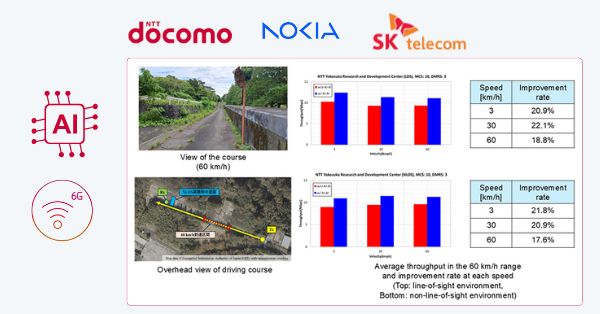Why Cisco’s NeuralFabric Acquisition Matters for Enterprise and Telecom AI
Cisco’s intent to acquire Seattle-based NeuralFabric signals a decisive shift toward practical, domain-specific AI that meets real-world constraints around data, compliance, and infrastructure.
Acquisition timeline and integration roadmap
Cisco plans to acquire NeuralFabric, an enterprise AI platform focused on building small language models (SLMs) from proprietary data with deployment across SaaS and on-premises environments. NeuralFabric’s team is expected to join Cisco’s AI Software and Platform organization, with the transaction targeted to close in Q2 of Cisco’s fiscal year 2026, pending customary approvals; both companies will operate independently until then. The move builds on Cisco’s broader AI push, including AI Canvas, Cisco AI Assistant, the Deep Network Model, a Security Reasoning Model for cybersecurity, and Cisco Data Fabric.
Strategic rationale under data, cost, and compliance constraints
Enterprise AI adoption is stuck between ambition and operational reality: data sovereignty and regulatory pressure, GPU scarcity and cost, and the limits of generalized LLMs in complex, regulated domains. Cisco’s 2025 AI Readiness Index found that only a small minority of organizations are fully prepared to capture AI value, underscoring the need for architectures that are secure, compliant, and resource-aware. By focusing on SLMs trained on enterprise data and deployable in hybrid environments, Cisco aims to shorten time-to-value while keeping control where it belongs—inside the business.
Shift from generic LLMs to domain‑tuned SLMs
The industry is moving beyond one-size-fits-all models toward purpose-built intelligence tuned for specific contexts, data, and policies.
Why SLMs suit regulated, data‑rich industries
SLMs are smaller, faster, and easier to govern than internet-scale LLMs. They reduce inference cost, improve latency, and can be deployed on-premises or at the edge—critical for sectors like telecom, financial services, and healthcare. For CSPs, SLMs trained on OSS/BSS data, network telemetry, and security logs can drive NOC automation, fault prediction, customer care augmentation, and closed-loop assurance without sending sensitive data off-domain. They also align with data residency needs and evolving regulations such as GDPR, the EU AI Act, and sector-specific privacy requirements.
Cisco AI Canvas, model portfolio, and data fabric
AI Canvas is Cisco’s generative UI workspace designed to orchestrate teams, agents, and data across domains. It pairs SLMs with task-centric interfaces and integrates with Cisco AI Assistant to deliver context-aware experiences. Cisco’s Deep Network Model focuses on network understanding, while its Security Reasoning Model targets threat detection and response. Cisco Data Fabric underpins this with a unifying layer for governed data access and sharing, helping break down silos without compromising control. NeuralFabric’s platform slots into this vision by accelerating SLM development, training, and deployment.
What NeuralFabric adds to Cisco’s enterprise AI stack
NeuralFabric brings modular SLM tooling, distributed systems expertise, and compliance-aware pipelines to operationalize AI faster in complex environments.
Modular SLM tooling and hybrid deployment flexibility
NeuralFabric provides end-to-end workflows for building domain-specific models from proprietary data, with options to deploy via SaaS, on-premises, or hybrid. Expect streamlined training pipelines, model versioning, observability, and policy enforcement throughout the lifecycle. For organizations wrestling with GPU scarcity, the ability to tune compact models, apply quantization and distillation, and place inference close to data can materially reduce total cost of ownership and latency while improving reliability.
Distributed data engineering and real‑time AI patterns
The team brings deep expertise in distributed systems and large-scale data platforms—skills essential for training and serving models across multi-cloud and edge footprints. Capabilities such as continuous learning from production signals, predictive use case modeling, and proactive compliance monitoring can help enterprises keep models aligned with dynamic conditions, new threats, and regulatory updates. For Cisco’s engineering org, NeuralFabric adds talent aligned with enterprise-grade security and responsible AI practices.
Implications for telecom and enterprise AI architectures
The acquisition reinforces an architectural pattern: data stays governed, models get smaller and smarter, and AI runs where it is most efficient—core, cloud, or edge.
Priority network and security AI use cases
Telecom and large enterprises should target SLMs for AIOps and SecOps: NOC copilot experiences tied to topology and intent; automated RCA with change correlation; RAN and transport anomaly detection; customer care summarization with policy-aware retrieval; and SOC alert triage tied to a Security Reasoning Model. In multi-vendor environments, use SLMs with retrieval augmentation to align actions to existing runbooks, SLAs, and compliance policies, reducing false positives and mean time to remediate.
Architecture patterns aligned to Cisco’s AI direction
Prioritize a governed data fabric with fine-grained access controls; vectorization and retrieval pipelines for model grounding; a model registry with lineage and evaluation; and policy-based routing across cloud and on-prem inference endpoints. Standardize on Kubernetes, service mesh, and GPU/CPU pooling for elastic placement. For edge sites, design for low-footprint SLM inference with observability and remote attestation; consider confidential computing for sensitive workloads. Align AI operations with TM Forum Open Digital Architecture principles and incorporate MLOps practices for drift detection, rollback, and compliance auditing.
What to watch and how to prepare for SLM adoption
Track Cisco’s integration milestones and get your data, governance, and deployment strategy ready to exploit SLMs at scale.
Integration signals, pricing, and benchmarks to track
Watch for productization of NeuralFabric within AI Canvas, packaging and pricing for on-prem and hybrid deployments, and integration with Cisco AI Assistant, Data Fabric, and security offerings. Look for benchmarks comparing SLMs versus large hosted models on cost, latency, and accuracy for network and security tasks. Pay attention to roadmap commitments around edge inference, continuous learning, evaluation tooling, and regulatory features aligned to GDPR, EU AI Act, and critical infrastructure guidance.
Actions for CIOs, CTOs, and network leaders
Inventory high-value use cases where data sovereignty and latency matter; start with NOC/SOC workflows and knowledge-heavy operations. Stand up a governed data fabric and retrieval layer; define red/amber/green data policies for AI access. Pilot compact SLMs with clear success metrics and human-in-the-loop controls. Establish model evaluation, drift monitoring, and incident response for AI outputs. Plan capacity for mixed CPU/GPU inference and evaluate edge nodes for local processing. Update vendor RFPs to demand on-prem options, audit trails, and policy enforcement for AI pipelines. This acquisition is another sign that practical, compliant, and domain-tuned AI is becoming the default enterprise model—prepare your stack accordingly.









































